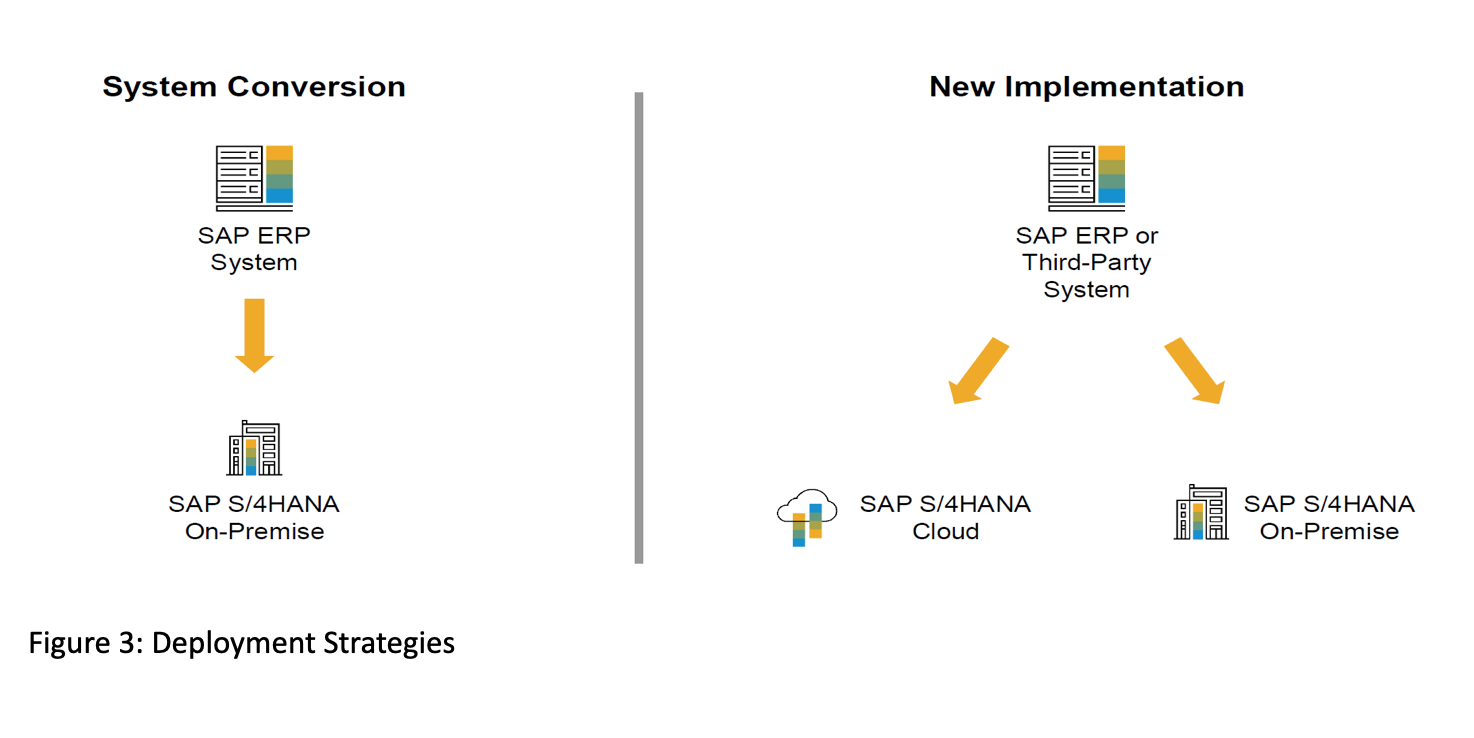Background
Globally, the technology space is changing fast and as such, the business enterprise systems are under immense pressure not only to keep up with these advances in technology but also the agile needs of business organizations and their desire to improve efficiency while simplifying business processes. It is with this regard that SAP embarked on a journey in 2015 to offer its customers new improved best practices, a simple and intuitive user interface coupled with faster processing speeds and embedded analytics powered by SAP S/4HANA. SAP, therefore, announced in 2015 that all its customers that the support for the SAP ERP will be ending by the close of 2025. According to a survey carried out by a market research firm IDC, 73 percent of surveyed businesses were planning to migrate into SAP S/4HANA, 18 percent currently deploying and 54 percent of SAP customers were planning to migrate in the next 3 years. Whether this is a sale strategy by SAP or not, we seek to evaluate what this migration means to the existing SAP customers and the expected changes.
The Insights into SAP S/4HANA
User Interface
Over the years, SAP customers have been accustomed to using transaction codes to perform business transactions. With this regard, the customers have had to endure an unfriendly user interface (Figure 1). In order to improve their customer experience while working, SAP developed an intuitive and friendly user interface powered by FIORI (Figure 2)which is a tile-based user interface that can be used across portable and mobile devices, mobile phones, tablets, laptops and so on.
Figure 1: SAP ERP GUI
Figure 2: SAP FIORI
Migration Options
Existing SAP customers have 2 options to actualize their migration into SAP S/4HANA.
System conversion:
This migration option is not-disruptive and allows SAP customers running the latest release of the SAP ERP to seamlessly run in SAP S/4HANA without carrying out a new implementation. This conversion will enable customers to utilize the new and invigorated functionalities provided by SAP S/4HANA system. Such the customer migrating will save on time and resources required carrying new implementation that involves extensive scoping and data migration activities. In order to limit system downtime during the conversion, technical conversion activities should be carried out during after hours and during the weekend in order to have enough time to solve unforeseeable errors and challenges (Figure 3).
New/Greenfield implementation
This approach is utilized by existing customers and prospective customers using third party solutions by carrying out a new implementation. This approach is preferred in situations where the customer wants to abandon their current SAP ERP systems. This form of migration will involve a full project team in all functionality and technical areas and system configuration and data migration activities are to be carried out (Figure 3).
Figure 3: Deployment Strategies
Deployment Strategies
SAP customers now have different deployment strategies and infrastructure considerations for their SAP S/4HANA systems:
On-Premise
This form of architecture entails running on the SAP S/4HANA systems on physical servers at the customers’ premises or data center.
On-Cloud
The SAP customer will run their SAP S/4HANA system on the cloud. As such, the business organization does not need to invest in physical architecture or a data center for its solution. Additionally, the customer can host their system on a public or a private cloud
Hybrid
This form of deployment entails a combination of both the on-premise and cloud deployment options. Customers can choose which SAP solutions to run on-premise and on the cloud while benefiting from the seamless connectivity of all applications and solutions.
Impact on Skills
Migration to SAP S/4HANA implies that customers will have to upskill their current employees through additional training in order to familiarize and utilize the enhanced capabilities and align their business process to the new systems.
Implications of Failing to Migrate to SAP S/4HANA
As with other software companies like Microsoft, customers that will not have migrated their existing SAP ERP systems to SAP S/4HANA by 2025, SAP will not provide support to their systems should their systems require their support. Additionally, SAP will not provide more upgrades and releases which will make their systems vulnerable.
Benefits to Migration to SAP S/4HANA
While SAP customers are considering whether to embark on the migration journey to SAP S/4HANA, the following are the resultant benefits:
Embedded analytics and artificial Intelligence
Renewed applications, especially in Finance applications
Varied deployments options
Enhanced user experience, user interface.
Enhance application mobility
Improved performance driven by the in-memory database
References
SAP Support Strategy
https://support.sap.com/en/offerings-programs/strategy.html
Choose from a variety of SAP HANA deployment options
https://www.sap.com/africa/products/hana/implementation/deployment.html
Design. Develop. Deliver. A modern UX for every device. And every user.
https://www.sap.com/products/fiori.html
Latest IDC Survey: Customers Are on the Move to SAP S/4HANA
https://news.sap.com/2019/06/sap-s4hana-customer-migration-idc-survey/




